The Creative Brief :: Part 1
he brief. That genesis of the creative process. All design jobs begin with a briefing from the client, usually in written form (the preferred option) though they can also be given verbally. It’s difficult to overstate how important the humble brief is to the design process. In short, no brief, no project! Breaking the topic down into key aspects over several articles, I’ll be taking you through the ins and outs of everything you need to know about the brief. Let’s start with…
Quality
As mentioned above, some clients brief their designers verbally, others will supply a detailed written document, and some do something in between (an initial chat over a pint, some follow-up emails, a telephone call).
Whichever way your client likes to deal with these things, I’d suggest always at least trying to obtain a written brief. It adds clarity to things and gives the designer a document to return to if unsure of the client’s intentions. Let’s assume you’ve got what you want, a written brief from your client. The next thing to consider is quality. Whilst a hastily-scribbled couple of sentences torn from a ring-bound notepad and pressed into the designer’s palm can result in mistaken instructions, general confusion and, ultimately, a solution which falls short of the client’s expectations, a detailed, structured and rational document, supported by meetings and telephone calls, can provide the designer with a sound understanding of what the client wants. The better the briefing, the more intuitive this understanding will be, and the greater the chances of you delivering a solution your client will love.
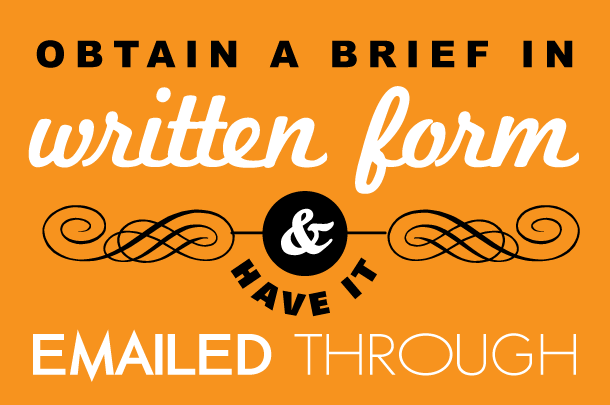
An example of a good brief
Shown below is an example of a well-written brief commissioning the work of a branding exercise for a new financial services company based in Manchester, England (the name of the company has been obscured). The client has tried to be as helpful as possible in providing the designer with all the information he’ll need before he starts the project, including company history and values, objectives, instructions on the tone of voice and visual image the company would like to project, and an informal ‘likes’ and ‘dislikes’ to help steer the designer in the right direction. Little, if nothing, has been left unclear. A brief like this, outlining exactly what the client wants, doesn’t want, likes and doesn’t like, gives the designer a flying start when beginning a project.
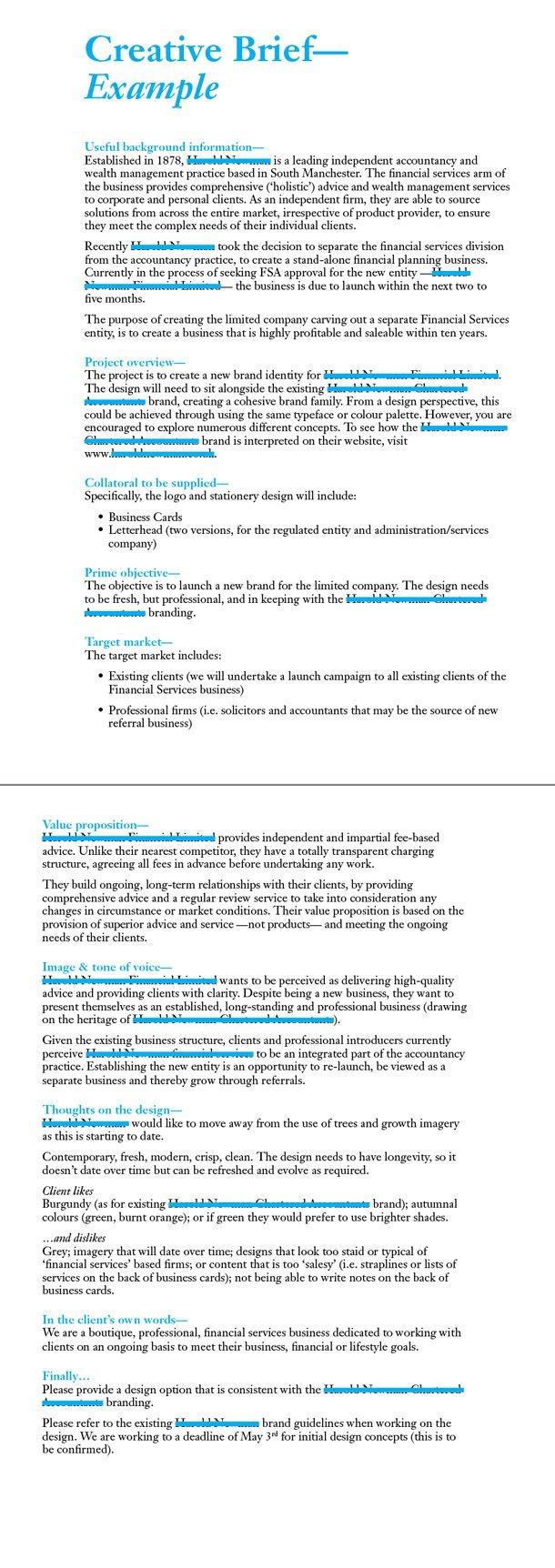
Dear Lord, I never knew that…
The word briefing comes from American military language and means a deployment discussion with a short description of the situation and explanation of the aims of the operation, and a detailed strategy. The term was introduced into advertising by the American advertising executive Rosser Reeves and the copywriter David Ogilvy, and was then adopted by marketing.
Top Tips
- If your client is reluctant to provide you with a written brief, offer to write one yourself and supply it to him. If he’s not keen on the idea, alarm bells should start ringing
- Examine, prod, probe and jab at the brief until you know it inside out
- If unsure of anything, ask the client
- Develop a sixth sense for recognising a bad brief. If you come across one you can walk away from it, or suggest you re-write it
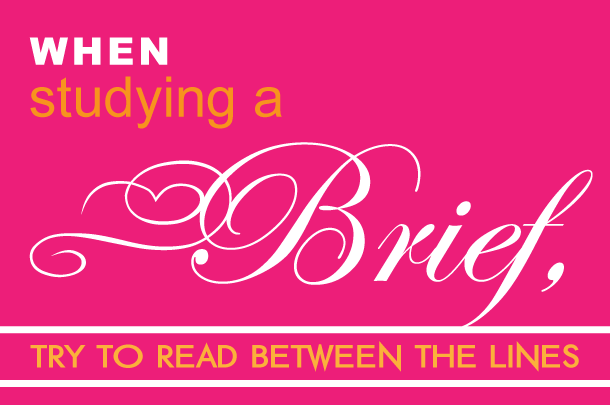
Receiving the brief
Once you’ve received your gleaming and faultless document, the creative process may begin! The first responsibility of the designer is to understand the brief, so be sure to go over yours with a fine tooth comb until you’re confident you fully understand your client’s aims, objectives, needs and desires. If unsure of anything, don’t make assumptions on behalf of anyone else, but get back in touch with the client and ask for further clarification. Bring to bear what you already know about the project and your client and try to read between the lines. In short, do as full a job as possible on understanding the brief.
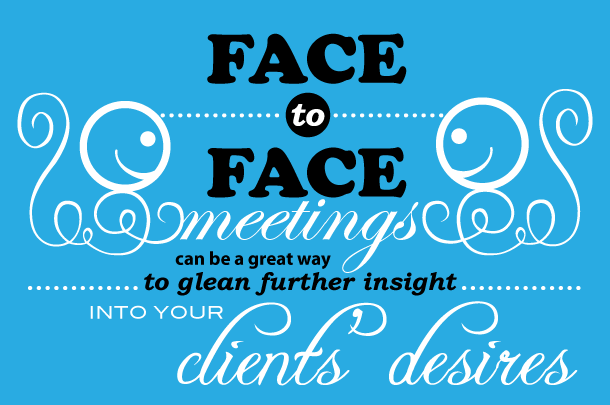
The re-briefing
In addition to the chief document you will have received, an initial conversation will have taken place where the project will have been discussed and the commission offered. Much can be learnt at this (usually informal) stage, especially if the conversation happens face to face. Use the time to delve into your client’s thoughts, share concerns if there are any and try to gauge his intentions.
After this initial chat, your receipt of the brief and examination of it, a re-brief might be necessary. The re-brief affords the designer an opportunity to go over any corrections and seek further clarification after the commission has been accepted. This re-briefing can be a valuable stage in the process, a time for discussion and for the designer to present the basic idea for his concept to the client, before time and money are invested in the implementation phase.
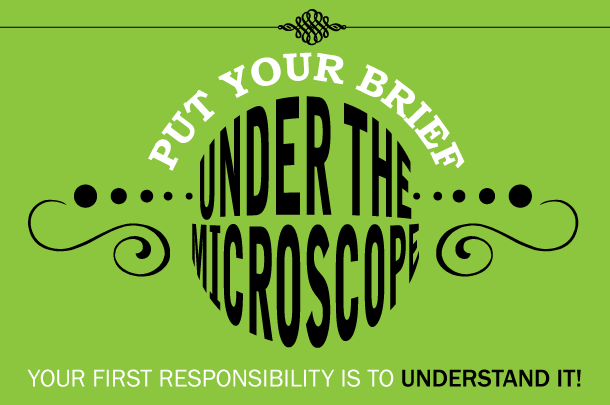
Summary
This might all seem a lot to take on board, but to secure yourself, then scrutinise, the document which holds the key to you delivering your best creative response is really common sensical. Succeed here and you’ll be ready to begin the fun stuff!
by